#Java objects
Explore tagged Tumblr posts
Text
What Is Object-Oriented Programming in Java and Why Does It Matter?
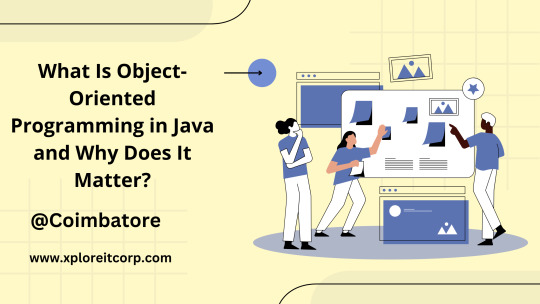
Java is super popular in the programming world, and one of the main reasons for that is its use of object-oriented programming (OOP). So, what exactly is OOP in Java, and why should you care? OOP is a way to organize your code by grouping related data and functions into objects. This makes Java easier to work with, more organized, and simpler to update.
Key Ideas Behind Object-Oriented Programming
To get a grip on OOP in Java, you need to know four main ideas: Encapsulation, Inheritance, Polymorphism, and Abstraction. These concepts help you write clean and reusable code, which is pretty important in software development today.
Encapsulation: Keeping Data Safe
Encapsulation means protecting the internal data of an object from being accessed directly. You do this using private variables and public methods. When you take a Java course in Coimbatore, you’ll learn how this helps keep your code secure and safeguards data from accidental changes.
Inheritance: Building on Existing Code
Inheritance lets a new class take on the properties of an existing class, which cuts down on code repetition and encourages reuse. Grasping this idea is key if you want to dive deeper into Java development, especially in a Java Full Stack Developer course in Coimbatore.
Polymorphism: Flexibility in Code
Polymorphism allows you to treat objects as if they are from their parent class rather than their specific class. This means you can write more flexible code that works across different cases. You’ll definitely encounter this in Java training in Coimbatore, and it’s essential for creating scalable applications.
Abstraction: Simplifying Complexity
Abstraction is all about hiding the messy details and only showing what’s necessary. For example, when you use your smartphone, you don’t need to understand how everything works inside it. Java uses abstract classes and interfaces to make things simpler, which you’ll notice in any solid Java course in Coimbatore.
Why It Matters in Real Life
So, circling back: What is OOP in Java and why is it important? Its real strength comes from making big software projects easier to manage. OOP allows multiple developers to work on their parts without stepping on each other’s toes.
OOP and Full Stack Development
Full stack developers cover both the frontend and backend. Understanding OOP in Java can make your backend logic much better. That’s why a Java Full Stack Developer Course in Coimbatore focuses on OOP right from the start.
Java and Your Career Path
If you're looking to become a software developer, getting a good handle on OOP is a must. Companies love using Java for building big applications because of its OOP focus. Joining a Java training program in Coimbatore can help you get the practical experience you need to be job-ready.
Wrapping Up: Start Your Java Journey with Xplore IT Corp
So, what is object-oriented programming in Java and why is it important? It’s a great way to create secure and reusable applications. Whether you’re interested in a Java Course in Coimbatore, a Full Stack Developer course, or overall Java training, Xplore IT Corp has programs to help you kick off your career.
FAQs
1. What are the main ideas of OOP in Java?
The key ideas are Encapsulation, Inheritance, Polymorphism, and Abstraction.
2. Why should I learn OOP in Java?
Because it’s the foundation of Java and helps you create modular and efficient code.
3. Is it tough to learn OOP for beginners?
Not really! With good guidance from a quality Java training program in Coimbatore, it becomes easy and fun.
4. Do I need to know OOP for full stack development?
Definitely! Most backend work in full stack development is based on OOP, which is covered in a Java Full Stack Developer Course in Coimbatore.
5. Where can I find good Java courses in Coimbatore?
You should check out Xplore IT Corp; they’re known for offering the best Java courses around.
#Java programming#object-oriented concepts#Java syntax#Java classes#Java objects#Java methods#Java interface#Java inheritance#Java encapsulation#Java abstraction#Java polymorphism#Java virtual machine#Java development tools#Java backend development#Java software development#Java programming basics#advanced Java programming#Java application development#Java code examples#Java programming logic
0 notes
Text
sometimes when you're not a great programmer and everyone looks at you and goes "i don't know... that's scary" when you want to do something in ren'py you have to get creative and by creative i mean code that would make an actual programmer get mad at you
#i have three semesters of java and one of python behind my belt from college like five/six years ago and i haven't learned anything since#yet i stay silly#i taught myself html once for a web design class where the professor was completely incompetent i can do a lot through sheer determination#notart#well that first sentence is a lie actually. i learned how classes/children worked so i could make item objects#which is something i kind of knew but forgor
136 notes
·
View notes
Text
Hello audience. Unfortunately, I am still on my break. However, I am happy to announce that I am still alive and kicking. In fact, I decided to make use of my unemployment and revisit HTML, CSS, and JavaScript to create... A visual novel.
Good News: code is 100% reusable because I used a JSON (i do not know how that works, someone can kindly explain to me...)
Bad News: this code sucks ass, and NOTHING works except playing the story. Transitions? Doesn't work. UI/UX? Ass. Effects? Hell no... Also, 70% of the features aren't present yet I'm gonna do it later.
Oh, this is CrossDust, if you can't tell.
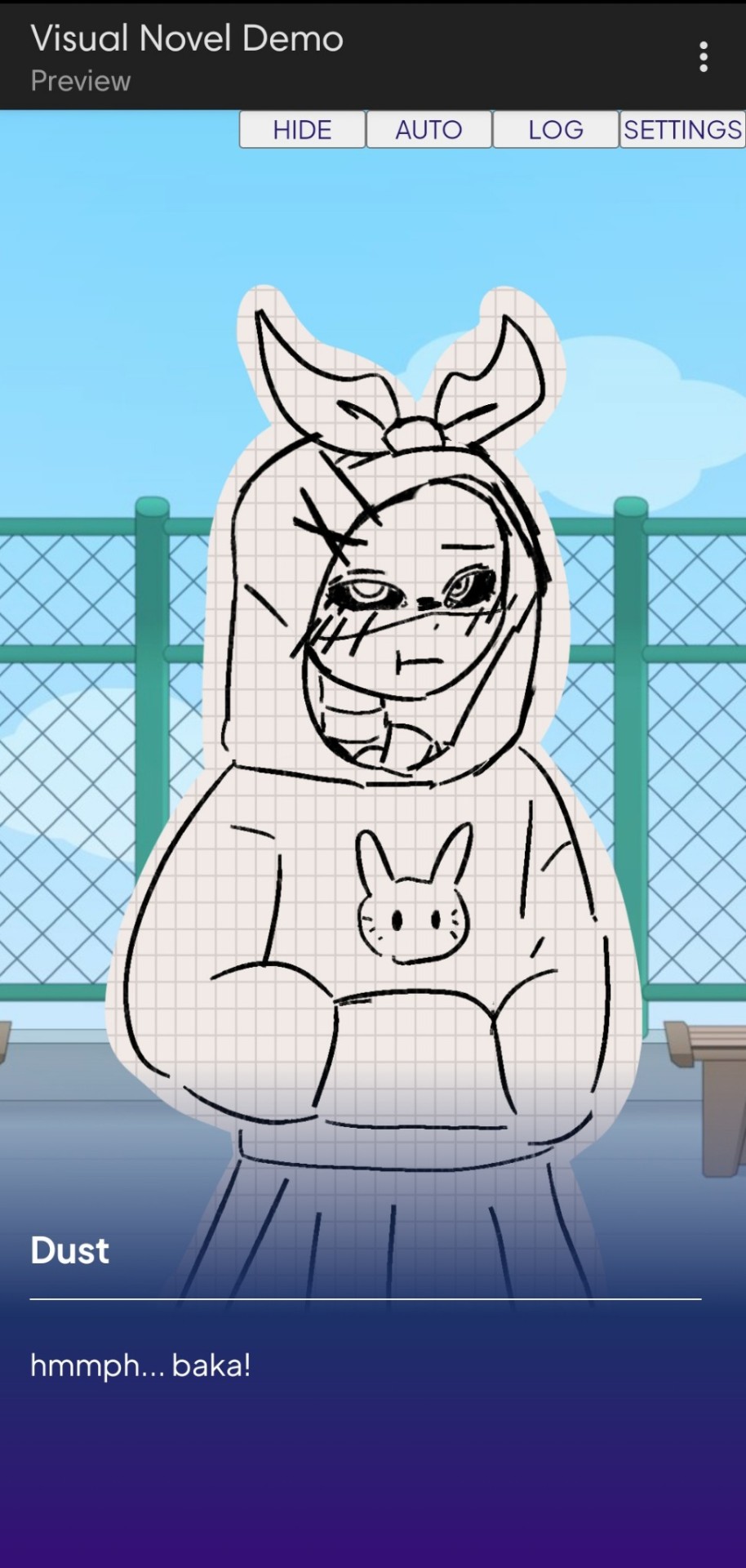

Dust Sans by Ask-Dusttale, Cross Sans by Jakei
I'm gonna respond to asks and do requests later (After my break is over). This is just a small update teehee.
#dsevalyappuccino#TIME TO GO INSANE IN THE TAGS!!#i hate css#i still hate css#css hell no#guys why is css so hard. ive literally been doing this for months and css is still hard#i was about to use css spritesheets for the sprites and emotions#but my ass gave up and instead i just use seperate images#GUYS!!! DISPLAY: FLEX 💪. DISPLAY: GRID?!?!#javascript i hate you tooq#i hate java script naurrrr#what do you mean DOM objects#what do YOU MEAN#also i do not understand error handling and JSON integrations#papaGPT doesn't explain anything#i don't know what I just wrote#coding???????????#kids don't be unemployed#actually maybe if you're unemployed but still making money that's great#also the sprites are just for testing purposes im probably gonna make new better ones if i chose to expand this into#a full blown anime high school visual novel project#i don't wanna think of all that story crap but then again i can just write the cringiest thing on earth
23 notes
·
View notes
Text
Post #176: Opinion poll by Small Basic Programming on Tumblr, Question: Which object-oriented programming language do you prefer to program with?, 2023.
#coding#programming#programmieren#education#learning#object oriented programming#python#java#c++#c#ruby#go#javascript#php#simula#smalltalk#scala#eiffel#opinion poll#survey
74 notes
·
View notes
Text
actually i just had the most random thought: fuck java.
#im dropping out of the course lol#its elective anyway#its just not worth waking up at 6 every saturday and having 6h of lab prep every week the guy is insane#also java sux ive come to realize#we wrote over 600 lines of code that does fuck all it enters staff and meals into a model of a restaurant#and finds shit like the most expensive order and the delivery driver who did the most deliveries#and it takes 600smth lines of code to do that like What?? KYS. K.Y.S.#and i truly do not get the point of private objects ur boxing urself in and making performing basic functions into a whole ordeal
2 notes
·
View notes
Text
added some placeholder blocks, items, and recipes! we got the perfectly generic item and perfectly generic object
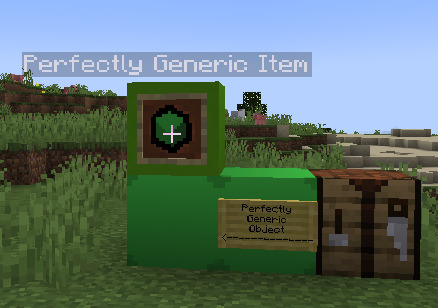

nine perfectly generic items make 1 perfectly generic object

oh and vice versa
these probably wont be in the final game cause theyre test objects
#modded minecraft#minecraft mods#minecraft#modding#mods#perfectly generic object#java#coding#true end mod
11 notes
·
View notes
Text
fuck me I probably do need to put C back on my resume even though I don't know a lick of it anymore, huh
sorry we're going full 2019 job search meltdown over here
#stares at these things that ask about java and my justification is that i can port javascript over. with adjustments#object oriented is object oriented.. i learned it a while ago i can take it back up....#sure that counts as professional experience. why the fuck not.
3 notes
·
View notes
Text
Understanding Object-Oriented Programming and OOPs Concepts in Java
Object-oriented programming (OOP) is a paradigm that has revolutionized software development by organizing code around the concept of objects. Java, a widely used programming language, embraces the principles of OOP to provide a robust and flexible platform for developing scalable and maintainable applications. In this article, we will delve into the fundamental concepts of Object-Oriented Programming and explore how they are implemented in Java.

Object-Oriented Programming:
At its core, Object-Oriented Programming is centered on the idea of encapsulating data and behavior into objects. An object is a self-contained unit that represents a real-world entity, combining data and the operations that can be performed on that data. This approach enhances code modularity, and reusability, and makes it easier to understand and maintain.
Four Pillars of Object-Oriented Programming:
Encapsulation: Encapsulation involves bundling data (attributes) and methods (functions) that operate on the data within a single unit, i.e., an object. This encapsulation shields the internal implementation details from the outside world, promoting information hiding and reducing complexity.
Abstraction: Abstraction is the process of simplifying complex systems by modeling classes based on essential properties. In Java, abstraction is achieved through abstract classes and interfaces. Abstract classes define common characteristics for a group of related classes, while interfaces declare a set of methods that must be implemented by the classes that implement the interface.
Inheritance: Inheritance is a mechanism that allows a new class (subclass or derived class) to inherit properties and behaviors of an existing class (superclass or base class). This promotes code reuse and establishes a hierarchy, facilitating the creation of specialized classes while maintaining a common base.
Polymorphism: Polymorphism allows objects of different types to be treated as objects of a common type. This is achieved through method overloading and method overriding. Method overloading involves defining multiple methods with the same name but different parameters within a class, while method overriding allows a subclass to provide a specific implementation of a method that is already defined in its superclass.
Java Implementation of OOP Concepts:
Classes and Objects: In Java, a class is a blueprint for creating objects. It defines the attributes and methods that the objects of the class will have. Objects are instances of classes, and each object has its own set of attributes and methods. Classes in Java encapsulate data and behavior, fostering the principles of encapsulation and abstraction.
Abstraction in Java: Abstraction in Java is achieved through abstract classes and interfaces. Abstract classes can have abstract methods (methods without a body) that must be implemented by their subclasses. Interfaces declare a set of methods that must be implemented by any class that implements the interface, promoting a higher level of abstraction.
Inheritance in Java: Java supports single and multiple inheritances through classes and interfaces. Subclasses in Java can inherit attributes and methods from a superclass using the extends keyword for classes and the implements keyword for interfaces. Inheritance enhances code reuse and allows the creation of specialized classes while maintaining a common base.
Polymorphism in Java: Polymorphism in Java is manifested through method overloading and overriding. Method overloading allows a class to define multiple methods with the same name but different parameters. Method overriding occurs when a subclass provides a specific implementation for a method that is already defined in its superclass. This enables the use of a common interface for different types of objects.
Final Thoughts:
Object-oriented programming and its concepts form the foundation of modern software development. Java, with its robust support for OOP, empowers developers to create scalable, modular, and maintainable applications. Understanding the principles of encapsulation, abstraction, inheritance, and polymorphism is crucial for harnessing the full potential of OOPs concepts in Java. As you continue your journey in software development, a solid grasp of these concepts will be invaluable in designing efficient and effective solutions.
#javascript#javaprogramming#java online training#oops concepts in java#object oriented programming#education#technology#study blog#software#it#object oriented ontology#java course
3 notes
·
View notes
Text
Very amused every time someone discovers the ultimate way to do OOP in its truest, most polymorphic, most object-oriented form and its just immutable classes with public instance variables and no methods and no inheritance being transformed through singleton classes with no instance variables and one side-effect-free method, potentially taking a function as a parameter or returning another single method class. Brother you just reinvented functional programming.
#codeblr#progblr#object oriented programming#OOP#functional programming#Algebraic data types. Pure functions. Higher order functions. Closures. The gangs all here#And then whenever you tell them that what they did. they say its like functional programming but different because its polymorphic#Literally had a conniption when robert martin said he discovered clojure was actually an oop language because#it was better at polymorphism than java#This is without knowing the subtype polymorphic features in clojure
4 notes
·
View notes
Text
What is Zero-Copy in Java?
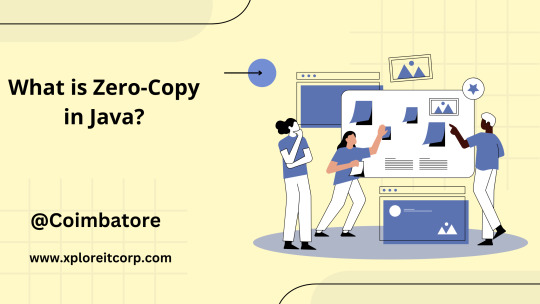
Zero-Copy is a technique that allows data to move between storage and network devices without needing to copy it into the application layer. In traditional I/O methods, you deal with several context switches and memory copies, but Zero-Copy cuts down on that, making things faster. This approach is super helpful for high-performance applications like file servers or video streaming services.
How Zero-Copy Works Internally
To get a grip on Zero-Copy in Java, you need to understand how the Java NIO (New Input/Output) package operates. It lets data flow straight from a file channel to a socket channel through methods like transferTo() and transferFrom(). This avoids using the Java heap and saves CPU cycles, which is really useful for anyone taking a Java Full Stack Developer training Course in Coimbatore .
Benefits of Using Zero-Copy
Some of the main benefits are less CPU usage, reduced latency, and better throughput. When applications need to transfer large files, they can do it more smoothly. This is especially relevant in enterprise-level development, which is a big part of the Java Full Stack Developer Course in Coimbatore. Developers learn how to improve server-client communication using features like Zero-Copy.
Use Cases in the Real World
Zero-Copy is popular in web servers, file servers, and video streaming platforms. Companies that need fast data handling tend to use this method. Students in Java Training in Coimbatore can try out Zero-Copy in lab sessions or projects related to file transfers and socket programming.
Zero-Copy vs Traditional I/O
With traditional I/O, data gets copied several times—from disk to kernel buffer, then to user space, and finally to the socket buffer. Zero-Copy skips these extra steps. Understanding this difference is key for anyone learning about performance optimization in server-side apps.
Java NIO and Its Importance
Java NIO was introduced to support scalable and non-blocking I/O tasks. It gives you the tools to implement Zero-Copy. In a Java Course in Coimbatore, you'll learn how NIO helps create fast and efficient applications, an important skill in the Java world.
Challenges and Limitations
Even though Zero-Copy enhances performance, it’s not the best choice for every situation. It's mainly useful for large file transfers rather than small bits of data. Also, debugging can get tricky because there’s less access at the application level. Students in the Java Full Stack Developer Course learn how to wisely decide when to use Zero-Copy.
Industry Demand and Career Impact
Knowing about Zero-Copy in Java can help a developer stand out, especially in roles that require high-performance application development. Many tech companies are on the lookout for skills in this area. For those in Java Training in Coimbatore, mastering these topics can lead to great job opportunities in backend and systems development.
Tools and Libraries Supporting Zero-Copy
Besides Java NIO, other frameworks like Netty also support Zero-Copy. These tools are often covered in advanced modules of a Java Course in Coimbatore. Learners can use these libraries to build scalable, high-performance applications, especially for real-time data tasks.
Conclusion: Master Zero-Copy with the Right Training
So, Zero-Copy in Java is a handy I/O method that's key for modern Java applications. To really get the hang of it, professional training is a must. Enroll in a Java Full Stack Developer Course in Coimbatore or participate in hands-on training at Xplore IT Corp, where they teach practical skills like Zero-Copy and Java NIO.
FAQs: What is Zero-Copy in Java?
1. What is Zero-Copy in Java and why is it useful?
Zero-Copy in Java allows for direct data transfer between disk and network without moving it into application memory, which boosts performance.
2. Which Java package supports Zero-Copy operations?
Java NIO supports Zero-Copy through methods like FileChannel.transferTo() and transferFrom().
3. Can I learn Zero-Copy in a Java Course in Coimbatore?
Yes, good training centers offer detailed modules on Zero-Copy, especially in full stack and advanced Java courses.
4. Is Zero-Copy suitable for all Java applications?
No, it works best for large file transfers or fast data systems where speed is important.
5. Where can I get hands-on training in Zero-Copy and Java NIO?
You can join Xplore IT Corp, recognized for its solid Java Training in Coimbatore and Java Full Stack Developer Course.
#Spring Framework in Java#Java Dependency Injection#Java Spring Boot#Spring Bean Configuration#Java Object Lifecycle#Spring ApplicationContext#Java Backend Development#Java Programming Basics#Spring Initializer#Java Class Loader
0 notes
Text
Interview: Gosling on Java
I found this interview fascinating. I flatter myself by imagining I have a lot in common with Gosling. Kudos to Darryl K Taft and The New Stack!
#software development#java#programming languages#object oriented programming#canadian#computer science#computer history#1990s#ibm#career#oracle#google#uav#ai#jvm#programming#crab
1 note
·
View note
Text
trying to figure out if i should do my algorithms project (boring, in java, probably helpful) or read madhouse as the end of the earth (interesting, not a single bit of java involved, expanding my polar exploration knowledge)
#mushd-rambles#<- think thats the tag i used earlier#java is a stupid af language i hate it#we shouldve never moved past C#the perfect language#all this “object oriented” shit is so unfashionable#i want my language old and without classes or objects
0 notes
Text
i'm poking around through RPG Maker MV's programming and... actually sort of understanding it? proud!!
#key speaks#i'm not too familiar with JavaScript#but i did learn object oriented programming in Java#and have done coding in Python and a teeny bit of C sharp#so it's moderately familiar and i understand most of the core structure#proud!#gonna keep going through the code tomorrow#it's getting late and i had to make myself stop for the night#i'm making mental notes of all the places in the code i'd maybe want to tweak to do more what i want them to#and the places that would have been necessary to change for some plug ins i've seen around#that object oriented programming class actually taught me a lot!#even if that professor wasn't the best#i appreciate the extra work he made us do now#(now that i can apply those concepts when it's not for a grade)
1 note
·
View note
Text
A Comprehensive Object-Oriented Programming Tutorial
Java object-oriented programming explained in simple terms means designing a program using objects and classes. Objects represent real-world entities, and classes act as blueprints for these objects.
0 notes
Text
JavaScript’s native Array and Object methods
Think you know JavaScript? Find out how native features can handle Objects and Arrays that simplify coding. No libraries necessary!
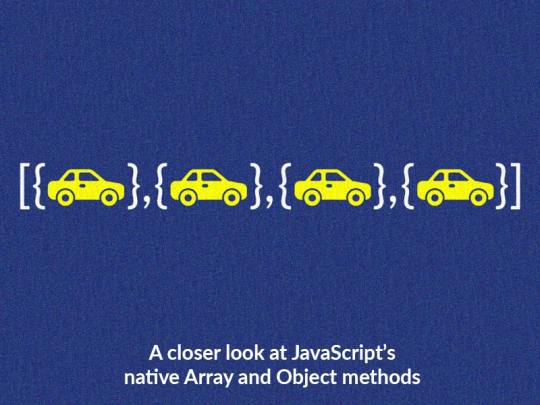
0 notes
Text
thinking about her(GreedyStackDestroyer)
#how tf do i get her to pass the third time test 😭#how do i get that third time test under 10 ms 😭😭😭#programming#coding#java#greedystackdestroyer#shitposting#tumblr nonsense#yeah that's a fitting tag#algorithms and datastructures#Arraylists#Arrays#HashMaps#HashMap#Array#ArrayList#tower objects
1 note
·
View note